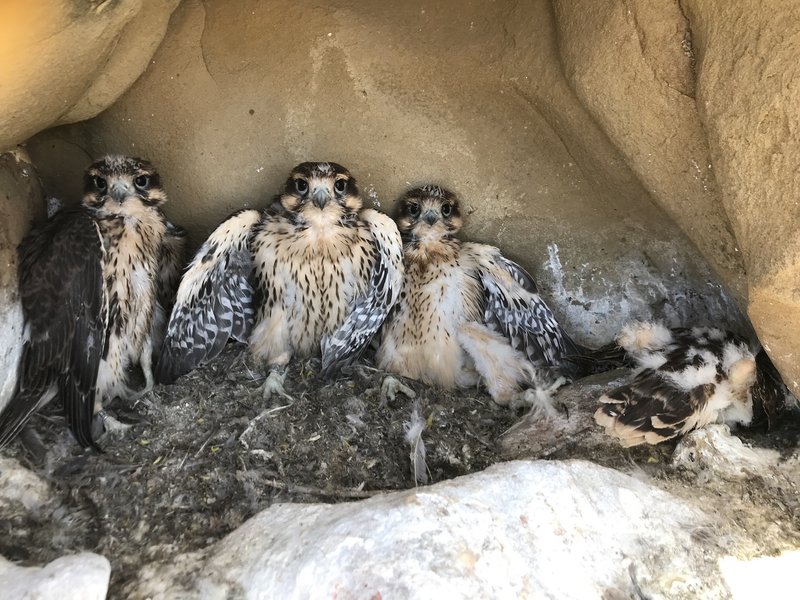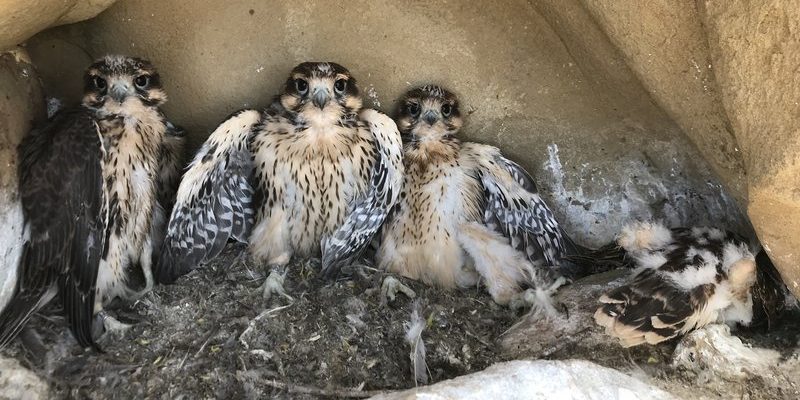
Similar to how we choose a home based on comfort and safety, falcons meticulously select their nesting sites. They don’t just plop down anywhere; they consider height, availability of food, and protection from predators. In this article, we’ll take a closer look at the nesting habits of falcons, their lifecycle, and everything in between. Strap in; it’s going to be an enlightening journey!
Understanding Falcon Nesting Choices
Falcons are known for being selective when it comes to their nesting locations. Most species prefer high, often cliffside sites or tall trees. Why? Because being elevated offers them a better view for spotting potential threats and hunting opportunities. It’s like choosing a penthouse apartment with a great view versus a basement suite; safety and perspective matter.
Different species have their unique preferences. For example, the Peregrine Falcon often chooses ledges on tall buildings or cliffs. They like to be near urban environments, where their favorite prey, like pigeons, are abundant. In contrast, the Gyrfalcon prefers arctic tundras and mountainous regions. By understanding these preferences, we can truly appreciate how adaptable falcons are to their environments.
Moreover, falcons usually return to the same nesting sites year after year if they find them successful. This fidelity shows their strong attachment to their homes, much like how we cherish our favorite spots on the planet.
The Nesting Process
Once a pair of falcons has chosen their nesting site, the next phase is all about preparation. This involves creating a structure that will effectively hold their eggs and keep them safe. Unlike many birds that build intricate nests, falcons often simply scrape a shallow depression in the ground, sometimes using pebbles or bits of vegetation. This makes their nests very minimalistic but functional.
During the nesting season, which usually occurs in the spring, both the male and female falcon play a role in preparing and defending their territory. You might see them performing aerial displays to ward off potential intruders. Here’s the thing: it’s not just about the nest; it’s about the whole space around it. They’ll defend a radius up to several kilometers, ensuring that their future chicks have a safe area to grow.
In some species, females will lay anywhere from 2 to 6 eggs. The female takes on the primary responsibility for incubating the eggs, while the male brings food to her. This division of labor is essential, helping ensure the survival of their offspring.
Incubation and Hatching
Once the eggs are laid, the real waiting game begins. Falcon eggs typically incubate for about 28 to 32 days. During this time, the female is crucial to the process, making sure the eggs are kept warm and safe from predators. Imagine being a single parent juggling chores and responsibilities; that’s kind of what she faces.
The female often turns the eggs to ensure even heating. This is a critical step because uneven heat can lead to development problems. After weeks of careful nurturing, the eggs finally begin to crack open. This hatching process, while miraculous, can be quite taxing for the chicks. They must use their beaks to break through the tough shell, a true test of strength right from the start.
After hatching, the chicks are initially quite helpless. They rely heavily on their parents for food and protection. The first few weeks are crucial, as they grow rapidly and begin developing their feathers.
The Importance of Food in the Nest
Once the chicks hatch, the dynamic in the nest shifts dramatically. Food becomes the primary focus. The parents work tirelessly to catch prey, mostly small birds and rodents, which they bring back to the nest. Honestly, it’s a lot like a busy kitchen where meals are prepared and served to hungry kids.
Falcon chicks are born with a strong hunting instinct, even though they are initially fed by their parents. The parents often start with small pieces of food, gradually encouraging the chicks to try their beaks at tearing apart larger pieces of prey. This is essential to help them develop the necessary skills they’ll need when it’s time to fend for themselves.
It’s fascinating to see how the parent falcons prioritize their offspring’s well-being. They’ll sometimes bring back food, even if it means risking their safety to ensure the chicks are well-nourished.
Fledging and Independence
As the chicks grow stronger and more capable, there comes a time for them to leave the nest. This process is called fledging and typically occurs around 6 to 8 weeks after hatching. You might be wondering what this looks like—it’s not just a sudden leap off the ledge!
Initially, the chicks will start flapping their wings and hopping around the nest, building up their strength and coordination. Then, the big moment arrives. One by one, they take their first flights. These flights are often clumsy, but it’s a rite of passage that signifies their readiness for independence.
Once they leave the nest, falcon chicks still depend on their parents for a while. The parents may continue to feed them as they hone their hunting skills and learn to fend for themselves. This phase can last several weeks, during which the young falcons grow more confident and adept at life in the wild.
Falcon Lifespan and Future Generations
Falcons are generally long-lived birds, with many species living for over a decade in the wild. Some, like the Peregrine Falcon, can even live 15 years or more under optimal conditions. Their lifespan can depend on factors like prey availability, habitat safety, and environmental challenges.
Once they reach maturity, falcons will often find a mate and repeat the nesting process. It’s fascinating to think about how these birds continue the cycle of life, passing on genetic traits and adapting over generations. For falcon enthusiasts, each nest tells a unique story, filled with challenges and triumphs.
Knowing their lifecycle helps us appreciate their role in the ecosystem. Falcons are incredible indicators of environmental health, and understanding their behaviors can give us insights into broader ecological trends.
Conservation and Falcon Protection
Unfortunately, falcons face threats from habitat loss, climate change, and human development. Many dedicated conservation programs work to protect their nesting sites and habitats. Here’s the thing: every little effort counts.
Community initiatives like providing nesting boxes in urban areas have proven beneficial for species like the Peregrine Falcon. These efforts help restore populations that were once near extinction due to pesticides like DDT. By learning about and supporting falcons, we can help ensure they remain a vibrant part of our natural world.
As we wrap up, it’s clear that understanding falcon nesting habits and their lifecycle is not just a niche interest—it connects us to the broader story of wildlife and conservation. By respecting these magnificent birds and their intricate lives, we can do our part to help them thrive for generations to come.

